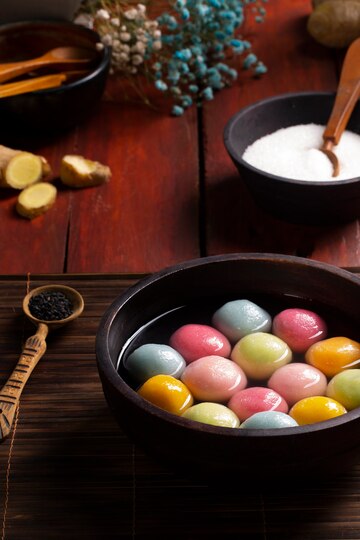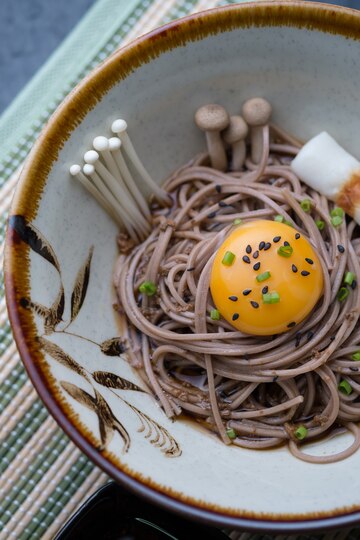Dango Masayoshi Ramen: The Ultimate Guide to This Delectable Dish

Introduction to Dango Masayoshi Ramen
Ramen has transcended its humble beginnings to become a beloved dish enjoyed around the globe. Among the myriad variations, Dango Masayoshi Ramen stands out as a unique culinary gem that captures both taste and tradition. This delightful bowl of noodles offers more than just flavor; it tells a story rich in culture and history. With each slurp, you not only enjoy an exquisite meal but also partake in Japan’s vibrant gastronomic heritage. Let’s dive deeper into what makes Dango Masayoshi Ramen such a cultural delight worth savoring!
History and Cultural Significance of Ramen in Japan
Ramen’s journey in Japan begins in the late 19th century. It was introduced by Chinese immigrants who brought their noodle soup recipes along with them. This dish quickly evolved, blending local flavors and ingredients.
Post-World War II, ramen gained immense popularity as a quick and affordable meal for a recovering nation. Street vendors proliferated, making it accessible to everyone. The culinary landscape changed dramatically during this time.
As decades passed, regional variations emerged—each area crafting its unique twist on the classic bowl of noodles. From rich tonkotsu broth in Fukuoka to the lighter shoyu style in Tokyo, each variant tells a story of its locale.
Today, ramen is more than just food; it’s intertwined with Japanese culture. Annual festivals celebrate this beloved dish while chefs experiment with avant-garde techniques that keep tradition alive yet innovative. Ramen has become an emblem of comfort and community across Japan.
The Unique Features of Dango Masayoshi Ramen
Dango Masayoshi Ramen is truly a culinary gem. One standout feature is the handmade noodles, crafted daily to achieve that perfect chewy texture. The artistry involved in making these noodles adds depth to every bowl.
The broth deserves special mention—it’s a rich blend of traditional tonkotsu and innovative miso flavors. This unique combination creates a harmonious balance that tantalizes the taste buds.
Another distinctive element is the choice of toppings. From fresh scallions to tender pork belly, each ingredient complements the others beautifully. A drizzle of aromatic garlic oil elevates it even further.
What sets Dango Masayoshi apart is its commitment to local sourcing. Fresh vegetables and meats are carefully selected from nearby farms, ensuring quality and supporting local agriculture.
This dedication not only enhances flavor but also reinforces community bonds through food culture—a true celebration on your plate.
Ingredients and Preparation Method of Dango Masayoshi Ramen
Dango Masayoshi Ramen is a feast for the senses, crafted with meticulous care. The star of this dish is undoubtedly the broth, simmered for hours to extract rich flavors from pork bones and aromatic vegetables.
The noodles used are hand-pulled, giving them that perfect chewiness. They absorb the savory goodness of the broth beautifully.
Fresh toppings elevate each bowl to another level. You’ll find tender slices of chashu pork nestled alongside vibrant green onions and soft-boiled eggs brimming with umami.
A sprinkle of nori adds a hint of oceanic depth while sesame seeds provide an added crunch. Every ingredient harmonizes perfectly, creating layers upon layers of flavor in every bite.
Preparation begins early in the day; patience truly pays off here as each element melds together seamlessly over time. This careful attention ensures that Dango Masayoshi Ramen delivers not just a meal but an experience steeped in tradition and love for culinary art.
Taste Test: What Makes Dango Masayoshi Ramen Stand Out?
Dango Masayoshi Ramen is a sensory experience that captivates from the first whiff. The aroma of rich broth wafts through the air, enticing food lovers to take their first slurp.
Each bowl tells a story through its complex flavors. The balance between savory and umami leaves taste buds tingling with delight.
What truly sets it apart is the handmade noodles, expertly crafted for the perfect texture—chewy yet tender. They soak up every drop of that flavorful broth.
Garnishes like freshly sliced green onions and nori add vibrant colors and additional layers of flavor, enhancing each bite.
Then there’s the secret spice blend—a touch of heat mingled with subtle sweetness—that elevates Dango Masayoshi Ramen into a realm all its own. It’s not just about satisfying hunger; it’s about savoring an art form in culinary tradition.
Click On Read: – Rholdeen Hicks Henderson
Health Benefits of Consuming Dango Masayoshi Ramen
Dango Masayoshi Ramen offers more than just a delightful taste. Its ingredients are packed with health benefits that can enhance your well-being.
The broth is often made from nutritious bones and vegetables, providing essential minerals like calcium and magnesium. These help support strong bones and overall health.
Noodles in Dango Masayoshi Ramen are typically crafted from wheat, offering carbohydrates for energy. Whole grain options add fiber, promoting digestion and aiding in maintaining a healthy gut.
Toppings such as fresh greens or seaweed introduce vitamins A, C, and K into the dish. These nutrients play vital roles in immune function and skin health.
Moreover, enjoying ramen can be a comforting experience. This positive emotional connection contributes to mental well-being while savoring each delicious bite.

Where to Find Dango Masayoshi Ramen?
For those eager to indulge in Dango Masayoshi Ramen, exploring local ramen shops and Japanese restaurants is a great start. Many establishments pride themselves on offering authentic dishes that highlight regional variations.
If you’re in urban areas, look for specialty ramen bars often featuring seasonal menus. These spots frequently experiment with flavors while staying true to traditional roots.
Online platforms can also point you toward hidden gems. Websites like Yelp or TripAdvisor provide reviews and insights from fellow ramen enthusiasts who have tried Dango Masayoshi Ramen.
Don’t hesitate to ask around! Local food bloggers and social media accounts dedicated to culinary adventures are excellent resources. They often spotlight lesser-known eateries where this delightful dish shines.
Traveling? Seek out festivals celebrating Japanese cuisine; these events typically feature stands serving up diverse ramen offerings, including the beloved Dango Masayoshi variation.
Conclusion
Preserving traditional cuisine is vital for maintaining cultural heritage. Dango Masayoshi Ramen represents more than just a meal; it embodies the history and artistry of Japanese food culture. Each bowl tells a story that connects generations, showcasing the dedication and passion of those who create it.
As we embrace modern culinary trends, it’s essential to remember and celebrate these time-honored dishes. By savoring Dango Masayoshi Ramen, we not only enjoy its rich flavors but also honor the traditions that have shaped Japan’s culinary landscape. Supporting local eateries that serve this beloved dish helps keep these customs alive for future generations.
Encouraging awareness around traditional meals fosters appreciation for diverse cultures worldwide. Every bite brings us closer to understanding our roots and the significance behind each ingredient used in recipes like Dango Masayoshi Ramen. Embracing such cuisines enriches our lives and strengthens community bonds through shared experiences at the table.
FAQ
1. What is Dango Masayoshi Ramen?
Dango Masayoshi Ramen is a unique fusion dish that combines two popular Japanese culinary staples: dango (sweet rice dumplings) and ramen (savory noodle soup). It offers a blend of traditional Japanese flavors with innovative textures and presentation.
2. What makes Dango Masayoshi Ramen different from traditional ramen?
Unlike traditional ramen, where noodles are the central ingredient, Dango Masayoshi Ramen incorporates chewy rice dumplings (dango) as a replacement or addition to the noodles. These dumplings absorb the broth flavors, giving the dish a distinctive texture and taste.
3. Is Dango Masayoshi Ramen sweet or savory?
It is primarily savory, as it retains the base ramen broth flavors like soy, miso, or tonkotsu. However, the dango adds a subtle sweetness, balancing the overall flavor profile.
4. Where did Dango Masayoshi Ramen originate?
This dish is a modern culinary creation inspired by Japan’s rich food culture. While ramen originates from Chinese noodles and evolved into a Japanese staple, dango has been a traditional Japanese sweet for centuries. Dango Masayoshi Ramen merges these two iconic dishes in a contemporary way.
5. What are the typical ingredients in Dango Masayoshi Ramen?
- For the broth: Miso, soy sauce, or pork bone (tonkotsu) stock.
- For the dango: Glutinous rice flour, water, and sometimes a pinch of sugar.
- Toppings: Scallions, nori, boiled eggs, bamboo shoots, and occasionally grilled meat or tofu.
6. Is Dango Masayoshi Ramen vegetarian or vegan?
It can be made vegetarian or vegan by choosing plant-based broths like miso or vegetable stock and skipping animal-based toppings. Dango itself is naturally vegan if made with just rice flour and water.
7. How is Dango Masayoshi Ramen served?
The dish is typically served hot, with the dango balls either skewered and placed as a garnish or floating in the broth alongside traditional ramen toppings.
8. Can I make Dango Masayoshi Ramen at home?
Yes, it is relatively simple to prepare. You’ll need to:
- Cook a ramen broth of your choice.
- Prepare dango by mixing glutinous rice flour with water, shaping it into balls, and boiling or grilling them.
- Assemble the dish with the broth, dango, and desired toppings.
9. Where can I try Dango Masayoshi Ramen?
While it may not yet be a common menu item in standard ramen shops, it can sometimes be found in modern or fusion Japanese restaurants. You may also encounter it at food festivals celebrating innovative Japanese cuisine.
10. Does the dango in the ramen stay chewy?
Yes, the dango retains its chewy texture due to its glutinous rice base. However, it also absorbs some of the broth, enhancing its flavor.
11. Is Dango Masayoshi Ramen gluten-free?
It can be gluten-free if the dango is made from pure rice flour and the broth does not include soy sauce or other gluten-containing seasonings. Ensure to check the ingredients for cross-contamination.
12. What are some variations of Dango Masayoshi Ramen?
- Spicy Version: Adding chili oil or spicy miso to the broth.
- Seafood Version: Using a seafood-based broth and incorporating fish or shrimp as toppings.
- Grilled Dango Version: Lightly charring the dango for a smoky flavor.
13. Is Dango Masayoshi Ramen popular in Japan?
While traditional ramen and dango are individually popular in Japan, this fusion dish is a niche offering, more commonly enjoyed as an experimental dish in fusion restaurants or at home.
14. What beverages pair well with Dango Masayoshi Ramen?
Green tea, sake, or light Japanese beers complement the dish well, balancing its savory and slightly sweet elements.
15. Are there any cultural influences behind Dango Masayoshi Ramen?
Yes, it reflects Japan’s culinary ethos of blending tradition with innovation. The inclusion of dango highlights Japan’s love for rice-based foods, while ramen represents the country’s adaptation of foreign cuisine.











Learn to Draw a Majestic drawing:el5lvtvvu6c= wolf Today
November 15, 2024[…] Dango Masayoshi Ramen: The Ultimate Guide […]